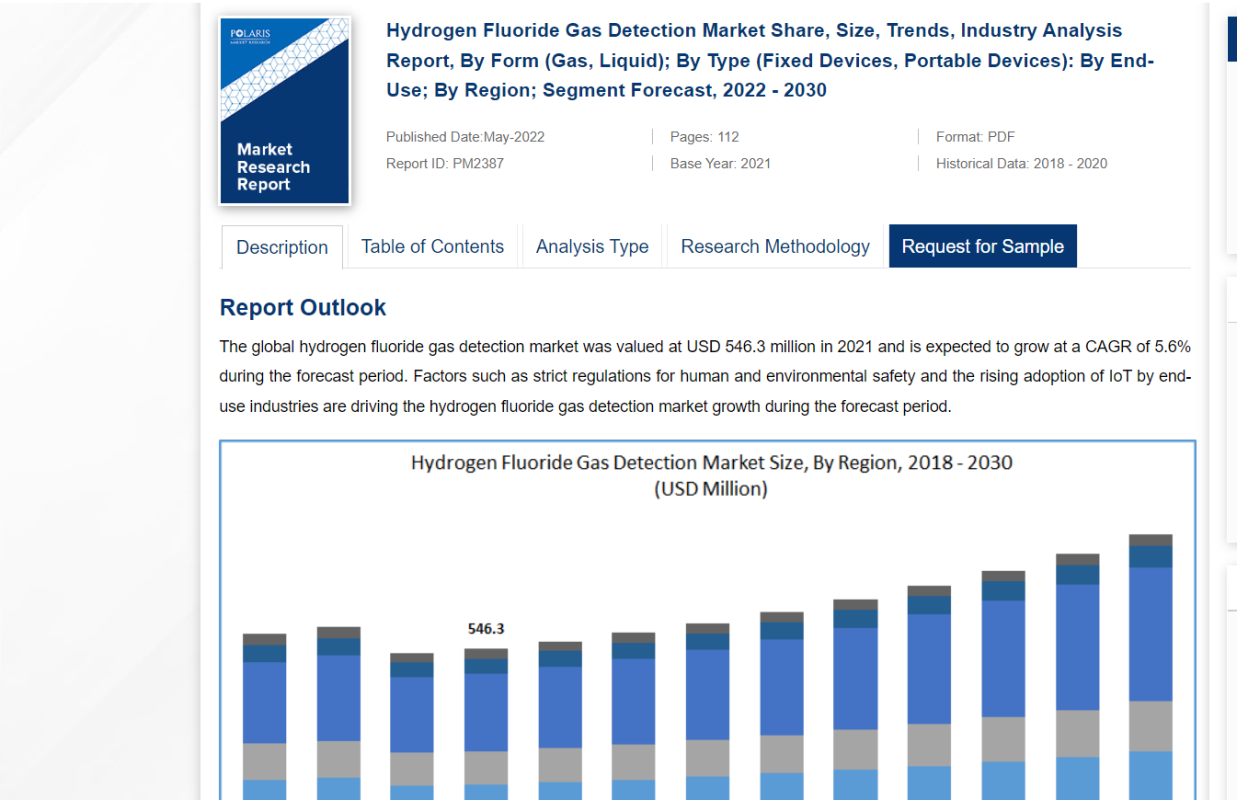
With a projected valuation of USD 546.3 million in 2021, the global market for hydrogen fluoride gas detection is expected to increase at a compound annual growth rate (CAGR) of 5.6% over the forecast period. Market expansion is fueled by strict laws pertaining to environmental and public health as well as the growing uptake of IoT by end-user industries. Because hydrogen fluoride is toxic, government regulations—especially those from organizations like OSHA and the EPA—have a significant impact on the growth of the business. Business expansions through partnerships, agreements, acquisitions, and the introduction of new products by significant companies are important growth drivers. Notable instances include Bacharach, Inc.’s acquisition by MSA Safety Incorporated and the company’s creation of a global center of excellence. Furthermore, Drägerwerk AG & Co. KGaA presented a Bluetooth gas detection solution in partnership with AWC, Inc.
Because chemical production processes require precise hydrogen fluoride gas detection, the chemical sector is anticipated to be the main source of revenue. Due to technical developments and an emphasis on energy harvesting in nations like China, India, and South Korea, the Asia Pacific area has the biggest revenue share. Much development is expected in North America, especially in the chemical and oil and gas sectors, due to the growing need to protect workers in situations where hazardous gases are present.
GAO RFID, Analytical Technology, Inc., Drägerwerk AG & Co. KGaA, Honeywell International Inc., MSA Safety Incorporated, and Teledyne Technologies Incorporated are some of the leading companies in the industry.
